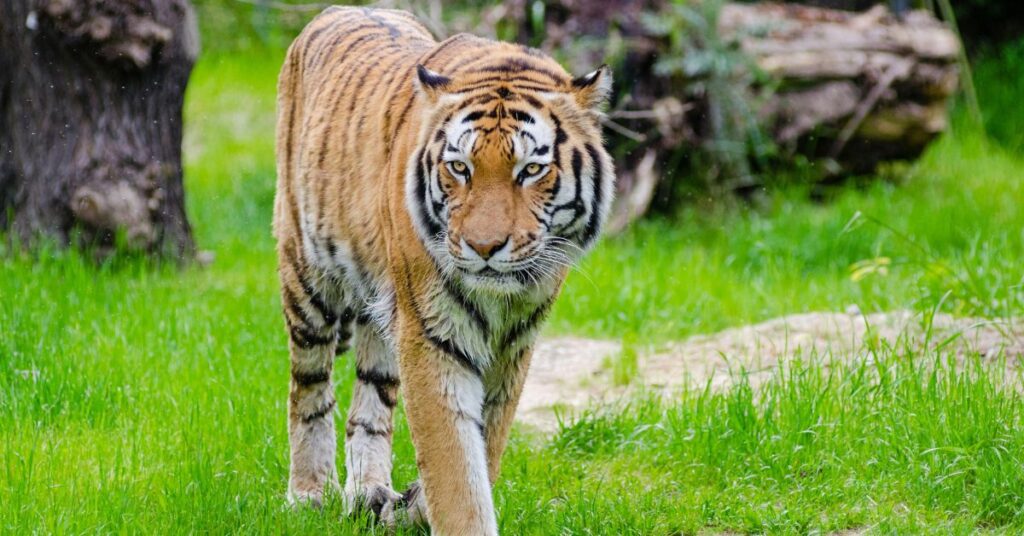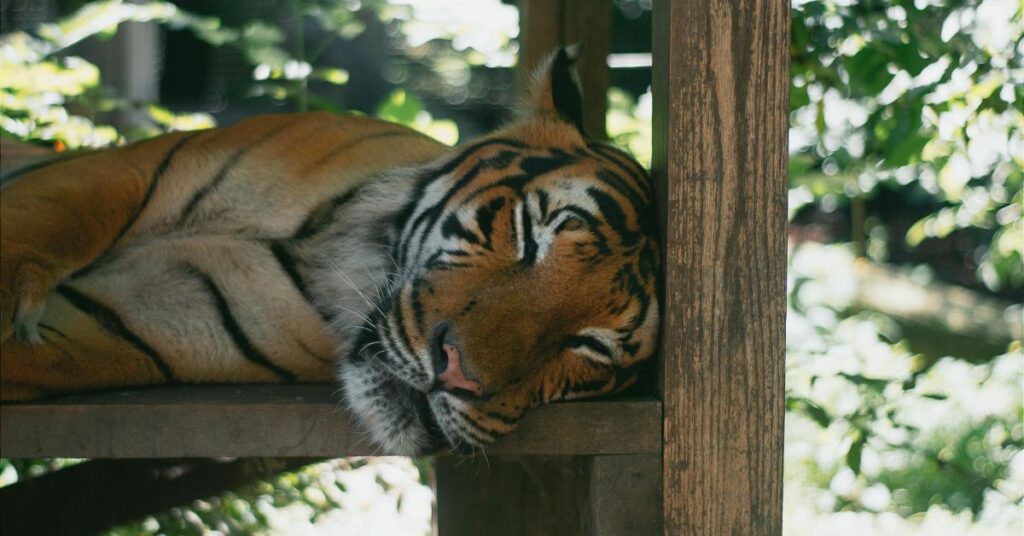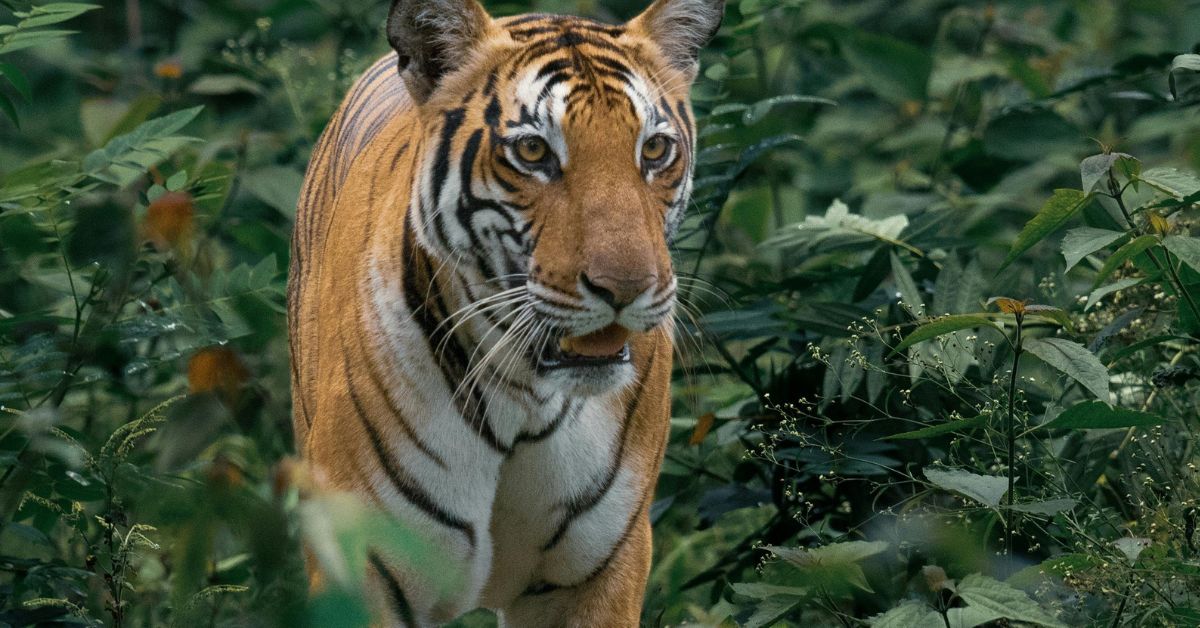Species of Bengal Tiger
The Bengal tiger is a population of a subspecies of tigers. It is considered the world’s charismatic megafauna. Among the biggest wild cats alive today Bengal tiger ranks number one according to the World Wildlife Fund (WWF).
Scientific Classification of Bengal Tiger
| Domain | Eukaryota |
| Kingdom | Animalia |
| Phylum | Cordata |
| Class | Mammalia |
| Order | Carnivora |
| Suborder | Feliformia |
| Family | Felidae |
| Subfamily | Pantherinae |
| Genus | Panthera |
| Species | panthera tigris |
| Subspecies | p. t. tigris |
Bengal Tiger Scientific Name
The scientific name of Bengal tiger is panthera tigris tigris or p. t. tigris
The Characteristics of Bengal Tigers
The Bengal tigers are very recognizable. They have a stripy orange coat and a long striped tail. Adult tigers have white spots on the back of both ear, so the young can easily follow them in low light. An adult Bengal Tiger can be up to 3 metres long including the tail, and weigh above 250 kilograms.
Bengal Tiger Size
Length
The male Bengal tigers are lager than the females. Including the tail the male have an average total length of 270 to 310 cm (110 to 120 inch), where as, the females are 240 to 265 cm (94 to 104 inch) long on average. The tail typically measures 85 to 110 cm (33 to 43 inch) in length.
Height
On average, tigers are about 90 to 110 cm (35 to 43 inch) in height at the shoulder level.
Weight
Adult male: 200 – 260 kg (440 – 570 lb)
Subadult males: 130 and 170 kg (290 – 370 lb)
Adult female: 110 – 180 kg (240 – 400 lb)
Subadult females: 80 and 100 kg (180 – 220 lb)
Habitat and Population
Bengal tigers inhabitat the Indian subcontinent. They usually dwell in tropical moist evergreen forests, tropical dry forests, tropical and subtropical moist deciduous forests, mangroves, subtropical and temperate upland forests, and alluvial grasslands.
Until the early 19th century the Bengal tigers historically range in the Indus River valley. They covered almost all of Pakistan, India, Bangladesh, southern Nepal, Bhutan and southwestern China. Now a days, they inhabits India, Bangladesh, Nepal, Bhutan, and southwestern China.
Tiger population in India was estimated at 2,603–3,346 individuals by 2018[1] , around 300–500 individuals in Bangladesh by 2015,[2] 355 in Nepal by 2022,[3] and 90 individuals in Bhutan by 2015.
Bengal Tiger Environment
As we told before, the Bengal tigers mainly inhabit the tropical forests of the Indian sub-continent. But in Bhutan, they have been seen on the hills as high as 4,500 meters above sea level. As a top predator, tigers play an vital role in maintaining the diversity and a healthy forest ecosystem within their habitat landscapes.
Habit of Bengal Tiger
Tigers are chiefly nocturnal and live alone. If they find large animals to feed on then they make a kill about twice a week. But if only small animals are available they have to kill more often. Their favorite prey are deer, wild pigs and wild oxen, but they also eat all kinds of mammals, birds, reptiles and fish.
Their movement may cover an area of 20 miles in one night’s search for food. They try to avoid contact with humans. Even though hungry tigers may attack domestic cattle, and a sick or lame tiger may even run after a human if they are unable to catch fast moving prey.

Diet
Tigers are carnivorous animal. They prefer hunting. Their large preys are usually the large ungulates such as chital, sambar, gaur, and to a lesser extent also barasingha and water buffalo.
Among the medium-sized preys they frequently kill wild boar, and occasionally hog deer, muntjac and Gray langur.
They also prey small species such as porcupines, hares and peafowl for a very small part of their diet. Due to the encroachment of humans into their habitat, they, sometimes, prey on domestic livestock such as cows, goats, sheep etc.
Bengal tigers are known to take other predators as prey such as leopards, wolves, jackals, foxes, crocodiles, Asiatic black bears and sloth bears. Although these are not a part of their typical diet.
While injured, old or weak, or in case of scarcity of their normal prey, they may even attack humans and thus become man-eaters.
Bengal Tiger Reproduction and Life Cycle
Reproduction
The females get puberty beteen 2to 4 years of age. For the males it is slightly later, around 4 to 5 years. The females show estrus for several days at a time. During the estus period her strong scent attracts males to mate her. The unique fact is that the females part ways with the male after mating for a couple of days.
Bengal tigers have no definite mating and birth seasons, mating can occur any time of the year. Even though most of the birth occurs in December and April but it may also occur in March, May, October, and November.
Life Cycle
Females only have cubs once every two and a half years and the gestation period is 90 to 110 days. There may be up to 6 cubs per litter. Cubs remain with their mother until they are two years old.
The mother takes care of and protect the young on their own. The young one’s birth weight is about 2 pounds and they born blind and helpless. The mother feeds them her own milk. When they emerge from the den, not only she continues to nurse them but also teach them to hunt for food. The juveniles start hunting when they are about 6 months old.

As time goes, the young becomes more independent. They spend plenty of time playing with their siblings which helps to prepare them for hunting and protecting their territory as well.
Often there begins a hierarchy among the young from the very start. There is a high mortality rate that is about half of the cubs before the adulthood. They leave their mother and find their own territory when they are about 18 months of age. The males tend to leave sooner than the females and to move a longer distance from their mother.
Life Span
Usually Bengal tigers live 13-14 years in nature while in captivity they can live longer, up to 20-25 years. In general, females can survive more than the males. In jungles the old tigers suffer from stiff joints, broken teeth, etc. and become unable to hunt and die of starvation.

Why Bengal Tiger is Endangered
Only a century ago, there were more than 100,000 Bengal tigers in the wild. But today? The population has downed to about 4,000, strictly isolated in ever-shrinking habitats.
In the near future of decades ahead, Bengal tigers could entirely disappear from the wild because of sea level rise, climate change, overdevelopment, extreme weather, and poaching.
The tigers would be just extinct because of human activity over the next several decades.
Human development and hunting over the past century have reduced the primary habitat to the Sundarbans, a marshy area in Bangladesh and India.
The combined threats of poaching, urbanization, habitat loss, and global warming has reduced 97% of its Bengal Tiger population in the last century.
Protections put in place by both countries’ governments have helped to stabilize the population in recent years. National parks, preserves, and sanctuaries are thought to be able to stabilize the tiger population, but the concerns still loom.
Amazing Facts About Bengal Tiger
For its charm, beauty and power, both Bangladesh and India has picked Royal Bengal Tiger as ‘National Animal’.
Here are some interesting facts:
- An adult male Bengal Tiger can weigh up to 420 pounds and measure nine feet in length.
- They have massive power. They can haul a prey heavier than themselves for nearly a mile.
- The white Bengal Tiger with black stipes is a rare phenomenon and due to gene mutation, not because they are albino.
- Bengal Tiger has the lengthiest canine (up to 4 inches).
- Bengal Tigers are unsocial animals. These solitary animals typically come and stay together only for the mating season.
- Bengal Tigers own big territory. They are lazy, snoozing and resting by day. But as soon as they rise in action, tigers travel large distances, protecting and owning a territory as much as 200 square miles.
- They can climb up on trees. In pursuit of a kill; their sheathable claws help them to climb.
- They are amazing swimmers. A prey cannot escape their powerful jaws even in the water.
- Their desired preys are antelope, wild boars, deer and even water buffaloes. But in need, they can kill crocodiles, monkeys, leopards, peacocks, wolves and even baby elephants.
- Swift and skilled killers. The tiger can break the prey’s spinal cord of in one jerk or a hold of the throat merely stops the life of any animal.
- The Bengal Tiger is an avid meat-eater. They can consume over 30-40 kg meat in one solo meal.
- The tigress gives birth to a litter of 3-6 cubs every 2 and a half year.
- Bengal tigers usually survive 12-13 years in nature, however, almost 25 years in confinement and a little less in the jungle terrains.
You can also read Welfare of Animal


I like thee helpful info you supply in your articles.
I’ll bookmark your weblog and take a look at once more here regularly.
I am rather certain I’ll learn many neww stufff proper here!
Good luck for the next! https://Odessaforum.BIZ.Ua/
I like the helpful info you supply in your articles.
I’ll bookmark your weblog and take a look
at once more here regularly. I am rather certain I’ll learn many new stuff proper here!
Good luck ffor the next! https://Odessaforum.BIZ.Ua/